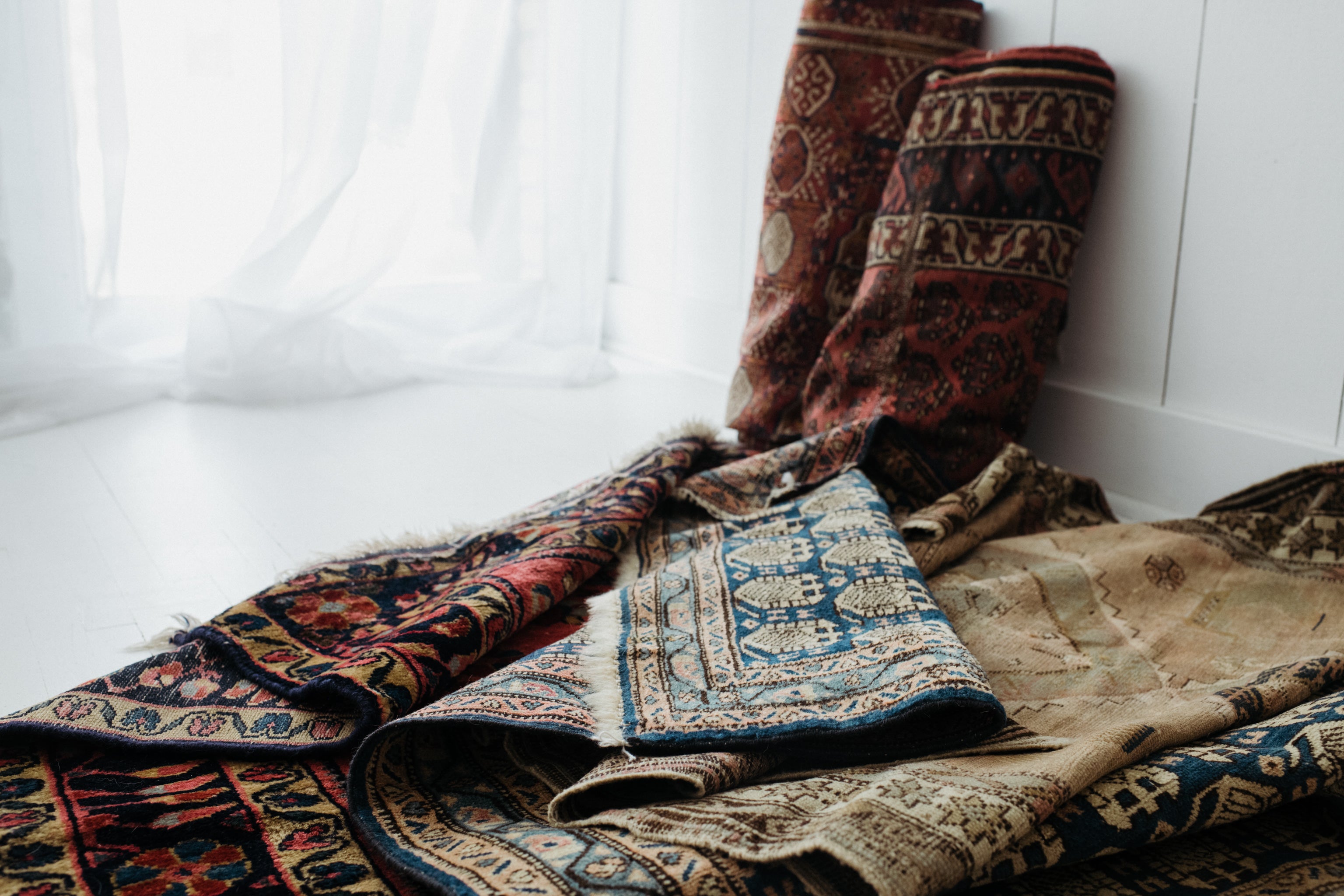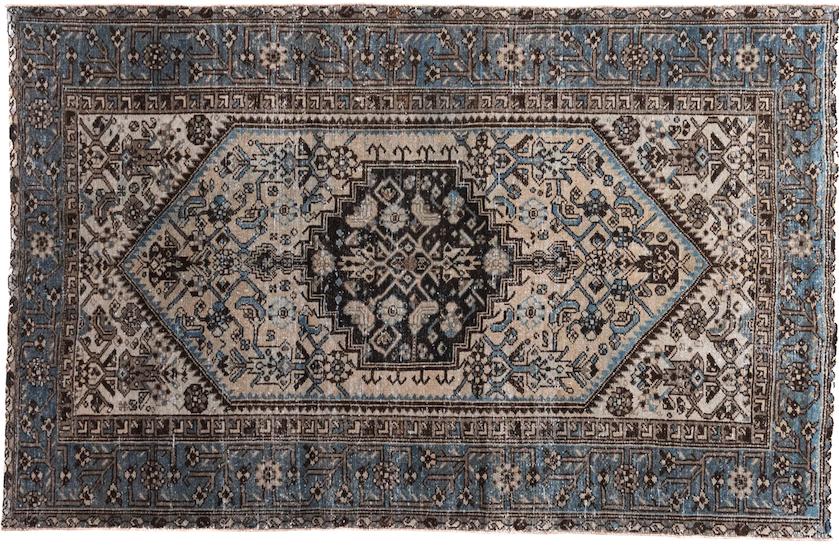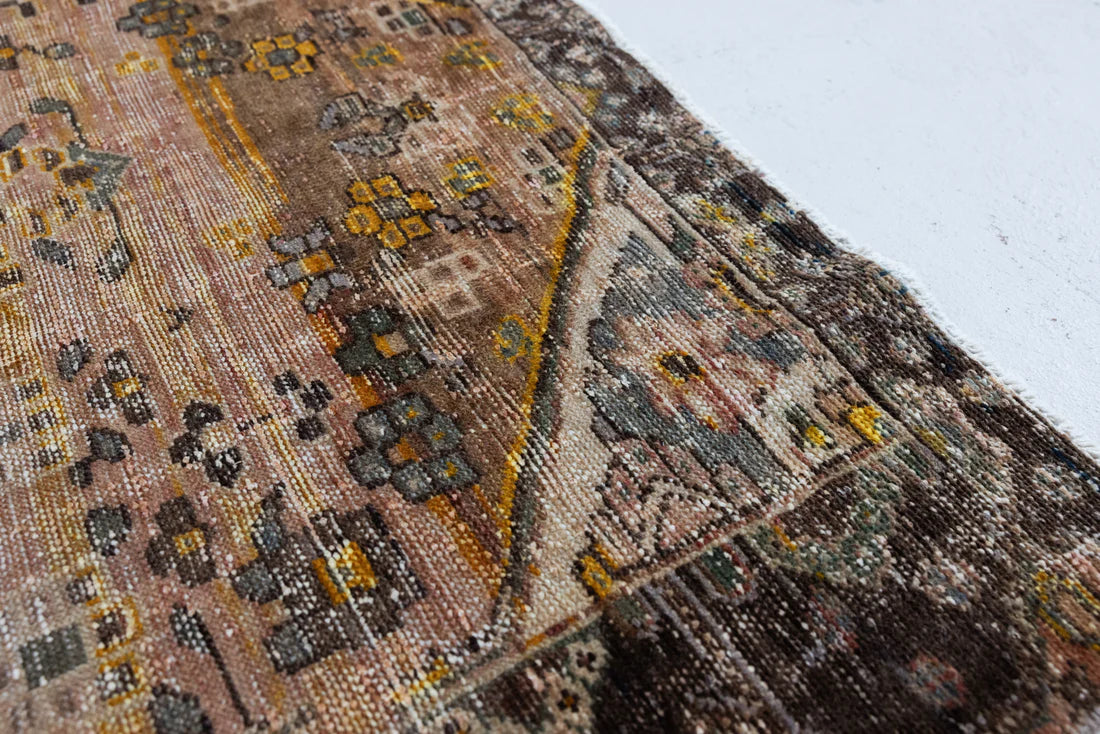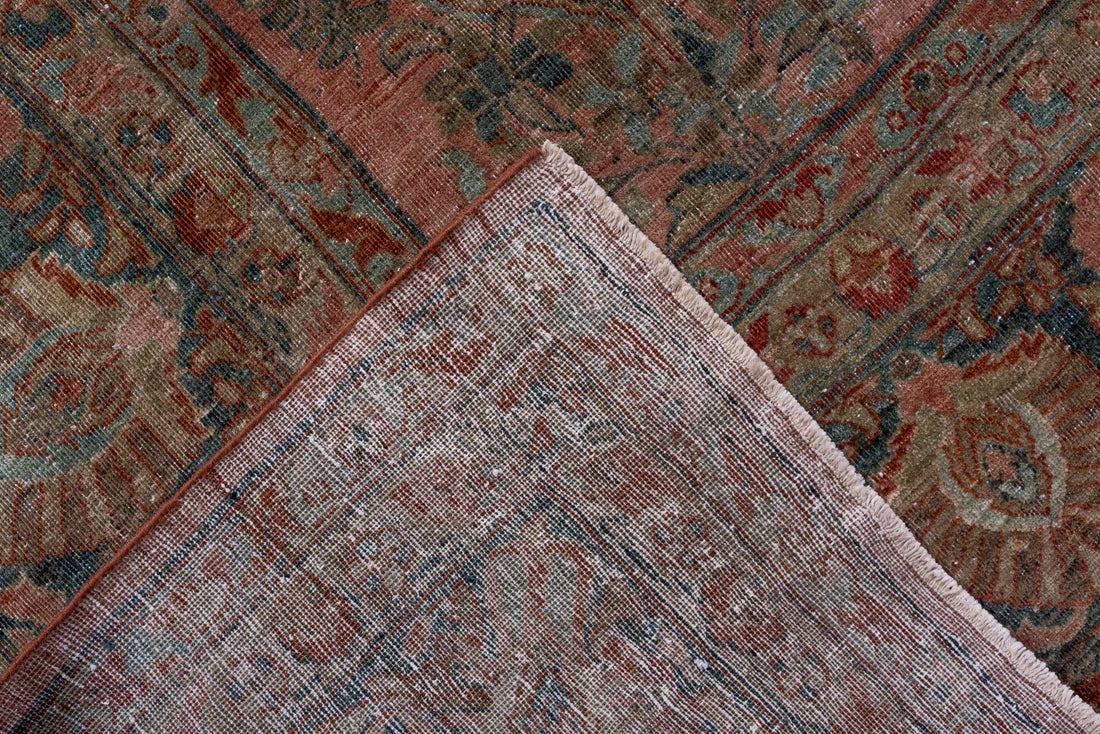Our DMs on Instagram are almost always overflowing with questions about our rugs, and many of them are the same, so we thought we'd round them up here for a one-stop-shop of all of your most frequently asked questions!
Do you do house calls?
Yes. We will do home viewings for larger or multiple rugs. We don't have a minimum purchase requirement, but we do expect the customer to spend a minimum of $2,5000 for an in-home showing. We charge a $250 fee for in-home viewing for places within 30 minutes of Excelsior, Minnesota, and we do a travel fee beyond that. The $250 is a non-refundable fee but it can be put toward any order of $2,500+.
This is something we used to do more frequently as we began building our business, but it is a lot of work to lug these rugs into a home. Some rugs weigh 50+ pounds!
How do you decide the price for each rug?
We have a system where we mark the rugs up a specific percent to reach our margins to stay in business and reinvest in new inventory. Some of our suppliers carry much more high-end rugs and in turn they charge more for wholesale. These rugs are what you'll find in our Designer's Collection.
We are always striving to offer the most inventory at the best prices, so a good wholesale deal for us is also a good deal for our customers. This is why you see such different prices on our site.
Pros/Cons of different types of antique rugs?
There aren't really any cons! Some origins have a looser weave and a lower knot count, and sometimes, when they are very old, they need a lot of refurbishment. But refurbishment is almost always possible, and these fixes often end up making the rug even more unique and charming.
As for pros: Where do we begin? We like to compare a vintage rug to an old house. They just don't build new houses the way they did in the 1920s, and the same goes for rugs. Rugs woven in the 1930s were literally made to last hundreds of years. Another pro is the natural fibers and variation in colors. It makes them unique and impossible to ruin with a stain.
How do you choose coordinating rugs in adjoining spaces?
When we help customers pick our rugs that will be close to one another, we always say to choose 2-4 common colors to be in each rug. For instance, you may have a neutral living room with taupe, ivory, brown, green, and blue colors. We would recommend choosing a rug with a rust base and blue and green in the design. Or a brown and green rug with another warm accent color like terracotta. The common colors would be the brown and green.
Styles are also important when designing rugs in adjoining spaces, and we love mixing modern rugs with vintage. As an example would be placing a chunky knit rug in the living room and a vivid vintage Persian for the foyer or a room adjacent.
Pattern play is so fun in design right now. So if you have a large-scale printed rug in your living room, you could mix another rug nearby with a small-scale print featuring a couple of common colors.
What are the differences between Turkish and Persian rugs?
A super popular question! Here are some differences of note:
Turkish: Made in Turkey; lower knot count per square inch; design not as intricate; designs are often more straight line and tribal (Anatolian) or floral (Oushak).
Persian: Made in Iran; more intricate design; designs are usually more elegant and regal; higher knot count; knot technique allows Persian rug designs to be more intricate.
In a nutshell, the biggest difference is the knot count and weave techniques. They are both structurally quite strong. Persian rugs are usually more expensive because they took much longer to make because of the higher knot count and intricate designs.
Do you offer custom sourcing?
Yes! Our criteria for custom sourcing is always evolving. As it stands, here's what we require:
- A $4,000+ budget;- Budget must be within reason for what the customer is looking for (consider size, origin, age, design, etc.);
- If sourcing exceeds one round, we ask for a deposit to continue;
- Payment in full to order the rug. Custom sourced sales are final;
- Rug is only held for 24 hours by supplier while customer decides.
We know this is a lot of rules! But after attempting to custom source for many people, we have learned it is very difficult to find exactly what people are looking for. Handmade vintage rugs are a big investment and we want to find the perfect rug for our customers. That said, it's important to be open-minded and not stuck on a specific rug that is unavailable.
Where did you find your rug supplier and how?
This took a lot of researching, digging, trial and error, and trust. We're not going to give up that secret! We are still with two of the first three suppliers we tried working with and we are forever grateful for them! We have a great relationship with our suppliers and we trust and resect them immensely.
How much do you pay the rug supplier for service, rugs, shipping to U.S., etc.?
Most of our suppliers add the repairs and shipping into the cost of the rug, which is how we prefer it. The less math we have to do, the better! All of our rugs come fully washed, repaired and refurbished, and ready to sell, and all of those fees are woven into the wholesale price.
What is the best type of rug for a dining room for families with kids?
We would recommend an Oushak like this one, below! They are very, very durable for heavy traffic, they're easy to vacuum, and the cotton foundation makes them a bit more stiff for scooting high chairs and tables around on.
Here's a post all about the best rugs for high-traffic areas.








